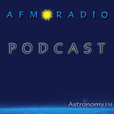
Summary: Hosts: Jesse, Harrison, and Paul (partially) Title: Hadfield’s Opportunity A big week for Canadian Astronaut Chris Hadfield as he announces his retirement from the corps. Harrison and Jesse fondly recall the highlights of his extensive and impressive career with the CSA. Are you an avid meteor shower observer? Hopefully you had a chance to check out the gamma Delphinids, a meteor shower last seen in June of 1930! Paul joined the show halfway through, mostly to make sure Harrison and Jesse weren’t pronouncing Aussie words incorrectly. This week in history the Hayabusa spacecraft returned from an encounter with Itakawa. It landed in Woomera, Australia. Thanks for listening all; show notes and podcast below. This week in space/astronomy history: 1. June 13, 2010 - The spacecraft Hayabusa returns the first samples of an asteroid to Earth (NASA article (http://www.nasa.gov/topics/solarsystem/features/hayabusa.html)) 2. June 11, 2003 - FERMI (http://fermi.gsfc.nasa.gov/) telescope was launched 3. June 13, 2003 - Spirit (MER-A) Launches towards Mars 4. June 10, 1995 - Spektr (http://spaceflight.nasa.gov/history/shuttle-mir/spacecraft/s-mir-spektr-main.htm) docks with MIR News: 1. Hadfield Retires. After 21 years as an astronaut, 3 flights, 166 days in space, and the only Canadian to visit MIR and command the International Space Station, Commander Chris Hadfield has announced his impending retirements from the Canadian Astronaut Corps. Suggested Reading: CBC article (http://www.cbc.ca/news/technology/story/2013/06/10/tech-hadfield-mission-recap.html), CSA Mission Summary (http://www.asc-csa.gc.ca/eng/media/news_releases/2013/0610.asp), CTV news (http://www.ctvnews.ca/canada/astronaut-chris-hadfield-to-retire-from-canadian-space-agency-1.1319477)2. Delphinids Meteor Shower. Astronomers of the notable SETI institute are indicating there may be a brief but viewable meteor shower outburst from the small Delphinus constellation. The peak of the shower is predicted to be at 4:30am EDT (8:30am UTC) on 11 June 2013. This shower has not been observed since 11 June 1930, when a few astronomers noted an outburst (not predicted). Suggested Reading: Universe Today article (http://www.universetoday.com/102794/observing-alert-rare-meteor-shower-may-outburst-on-june-11/#more-102794) Major Topics Discussed: 1. The Spinning Down of a Magnetar When stars that are between 4 and 8 times the mass of the Sun run out of fuel and stop fusing, they begin to collapse. The energetic source at the centre of the star that was holding up the massive outer layers is no longer present, leading to an inward collapse. This crushes the core of the star to very high density. The core reaches a degeneracy point, where it cannot be crushed any further, and the outer layers then ‘bounce’ off the core. This creates the massive supernova remnants we all see, and leaves a leftover ball in the centre known as a neutron star. Neutron stars are approximately 20 km across and weigh about 1.4 solar masses (near the Chandrasekhar limit (http://en.wikipedia.org/wiki/Chandrasekhar_limit)). Due to the large mass and small size, the density of a neutron star is very high. In fact, one tablespoon of a neutron star can weigh as much as 1 billion tons. Neutron stars also have two other extreme features: they spin very quickly and have very strong magnetic fields. Some neutron stars are clocked at 43000 revolutions per minute, and can have magnetic fields 1 trillion times stronger than Earth. At the magnetic poles of a neutron star are massive jets of radiation/material shooting away from the object. If the beam of light created by these jets points at Earth for a brief moment during the rotation of the neutron star, it will appear to pulse in brightness. Therefore, we call spinning neutrons pulsars. Further, a magnetar defines a neutron star that has a larger than average magnetic field. Astronomers, using the NASA SWIFT X-ray telescope,
